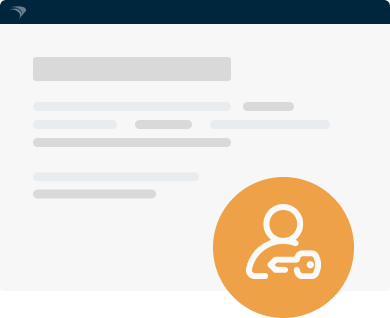Learn more about core factors to consider when evaluating endpoint management solutions for purchase.
With trends toward decentralized IT purchasing and ‘reactive’ purchasing decisions based upon emerging security threats, calculating ROI on technology purchases is often overlooked. However, there is the adage that if IT isn’t saving you money, it’s costing you money.
It is critical to understand the value of your technology investments. In this post, we will examine several important factors to consider when it comes to purchasing endpoint management solutions.
Vendor Consolidation
In most organizations, the number of endpoint devices, device types, and operating systems have grown faster than IT staff. As technology and risks evolve, the response has often been to add new point solutions targeting certain platforms or aspects of endpoint management. Over time, this results in unnecessary complexity in IT and high costs associated with vendor bloat. Most profoundly, we see this in the divide between Mac and PC departments, where isolated teams often perform identical tasks to support each platform.
Managing siloed endpoint management solutions is costly, in terms of cost and IT time, with unnecessary complexity leading to oversights in standards, security, and long-term management.
To consider the ROI of platform-agnostic client management, consider vendor costs, IT time, and the ability to ensure processes and infrastructure are in place to scale the business with control.
Automated Deployment & Patch Management
Some estimates suggest that ineffective endpoint management processes cost organizations millions of dollars. Deploying new systems to users has traditionally been a time-consuming and complex process, involving installing operating systems, settings, access configurations, encryption profiles, personalizations, and applications suited to particular user roles. For some organizations, traditional deployment would take a full hands-on day – for only four devices.
Automating deployment processes, including zero-touch deployment for Apple devices, can allow organizations to push out twenty or more devices in the same timeframe – while also freeing up time to work on other projects at the same time.
Beyond ensuring that every employee has the correct apps, resources, and tools to support their productivity and ensure compliance, it’s just as important to ensure applications remain installed, updated, and correctly configured. Self-healing applications and automated patch management can shave hours from IT time – and save untold dollars in ensuring your security posture remains strong.
Greater Visibility
Line of business (LOB) spending is set to overtake IT department spending, often creating critical gaps in visibility, introducing greater risk to the business. This ‘Shadow IT’ leads to the installation of apps and services that are unmonitored by IT, causing more issues than it resolves. Inefficient license use, duplicate software spends, unpatched applications, and critical holes in visibility are leaving organizations open to risk.
Decentralizing IT tasks without compromising IT security or compliance is possible with self-service IT. Self-service options allow organizations to provide a wide variety of application choice to users to download when needed, without the need for admin privileges or IT assistance. Downloaded this way, apps are visible and fall under appropriate patch management protocols – the perfect balance of autonomy and compliance.
Help Desk Efficiency
When it comes to technical troubleshooting, many organizations need to send an IT person out to assess a machine or provide hands-on training. With the trends toward remote work and widely dispersed organizations, this is an inefficient use of IT time or not possible at all. Instead, look for an endpoint management solution that allows IT to remotely assess and troubleshoot devices. Remote control also allows for IT to provide just-in-time training via screen sharing, reducing repeat technical support issues.
License Management
People who say “it’s easier to ask forgiveness than it is to ask permission” have never been through a software audit. Potential penalties for noncompliance can overwhelm the IT budget.
Effective license management, bundled into your endpoint management platform, can help you track licenses and installations, receive warnings when licenses run low, and manage Apple VPP licenses.
It’s also important to track application usage so that when it’s time to purchase or renew software, your purchase decisions will be better informed. Software that is not being used can be uninstalled and redeployed where it is needed, saving real dollars that you otherwise may have spent to avoid potential compliance issues.
Compliance / Security
Research has proven that simply adding more layers does not lead to an increase in security effectiveness. When it comes to determining the ROI of your endpoint security, it’s important to look at the big picture: how many layers do you have, what do they do, how can you make them stronger?
One of the first things malware does is disable the anti-malware software. The next step, then, is choosing a solution that will automatically re-install this critical security layer. Self-healing capabilities help ensure that all your security layers stay where you want them, helping fortify your organization against attack.
In addition, choose solutions that allow you to track application installations, enforce security configurations and passcode rules, and even geo-track devices for added security ROI. After all, one of the first points we made is about doing more – with less.

